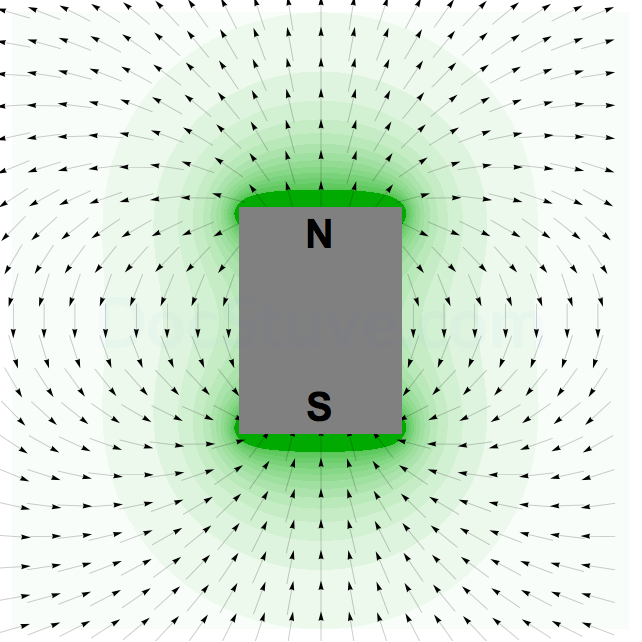All Magnet and Sensor Articles
These are a series of article about magnets and magnetic sensors.
Articles about Magnets and Sensors
In order to use magnetic sensors, you must properly position and orient bar magnets near the sensor. In order to do this correctly, you must understand how a sensor responds to magnetics fields. By knowing the shape of a bar magnet's field, you can easily determine how to operate a sensor with a bar magnet.
A reed switch consists of two ferrous leads sealed inside a glass tube. With an appropriate magnetic field applied, the leads will attract each other and snap together.
A Giant Magnetoresistive (GMR) switch turns on when a magnet is brought near. It is not polarity sensitive. When a magnet in the correct orientation approaches, the GMR switch will activate.
Bipolar switches are similar to latches. They activate with one pole and then deactivate with the opposite pole. Unlike a latch, the response to south and north pole is probably not symmetric. A particular device might respond more to one pole than the other.
An omnipolar switch is like a unipolar switch except that it responds to either magnet pole. As either pole of a magnet nears the switch, it will activate.
A Hall-effect latch is a device that is activated by one pole of a magnet and deactivated by the other. In many types of latches, the south pole activate the latch and the north pole deactivates. Once the latch has been activated or deactivated, it stays in the same electrical state until the other magnet pole is brought near.
A unipolar switch is a device that responds to a magnetic field. When the correct pole of a magnet is brought near, it turns on. When the magnet is moved away, it turns off. The actual details are more complicated, but this is the basic idea.
What are magnet poles? What do north and south mean? How do poles relate to magnetic fields?
Why do magnets attract some objects? Some objects can be magnetized. If a magnet comes close, the object turns into a temporary magnet. It is then attracted to the magnet.
Two important magnet material properties are strength and resistance to demagnetization. A BH curve shows how these are related.
A magnet's shape affects how much self-demagnetization occurs inside a particular magnet. This affects the external field produced by the magnet.
Simulating fields from bar magnets used for sensor applications is among the easiest electromagnetic simulation tasks. There are two main methods for doing this: finite-element analysis (FEA) software, and direct solutions of Maxwell's equations.
Permanent magnets can come in a variety of shapes and magnetizations. Many sensing applications need only a simple bar magnet. This article talks about bar magnets.
All of magnetism can be boiled down to a few simple ideas. If you understand these, you will be in a position to understand most magnet and sensor concepts.
Proximity sensing provides an on/off response when a magnet approaches close enough to a digital magnetic sensor. This is useful for detecting things such as door closures, object presence, or home positioning. This article looks at the situation where the magnet moves parallel to the sensor. A numerical example will be worked through to illustrate the process of magnet design.
Problems can be expensive. Time is lost. Money is lost. Customers get frustrated with you. Avoid as many problems as you can by using simulation and experimentation at the beginning of a project.
You have a magnetic sensing application. You have a tentative idea as to the magnet and sensor design you'd like to use. One of the most important things you can do is run a feasibility study. This will help you decide how much chance of success your design has before you start working on it.
Proximity sensing provides an on/off response when a magnet approaches close enough to a digital magnetic sensor. This is useful for detecting things such as door closures, object presence, or home positioning. This article looks at the situation where the magnet directly approaches the sensor.


















Tunneling Magnetoresistance (TMR) Switches are polarity sensitive devices that respond to a magnetic field. A correctly oriented magnet will turn them on and off.